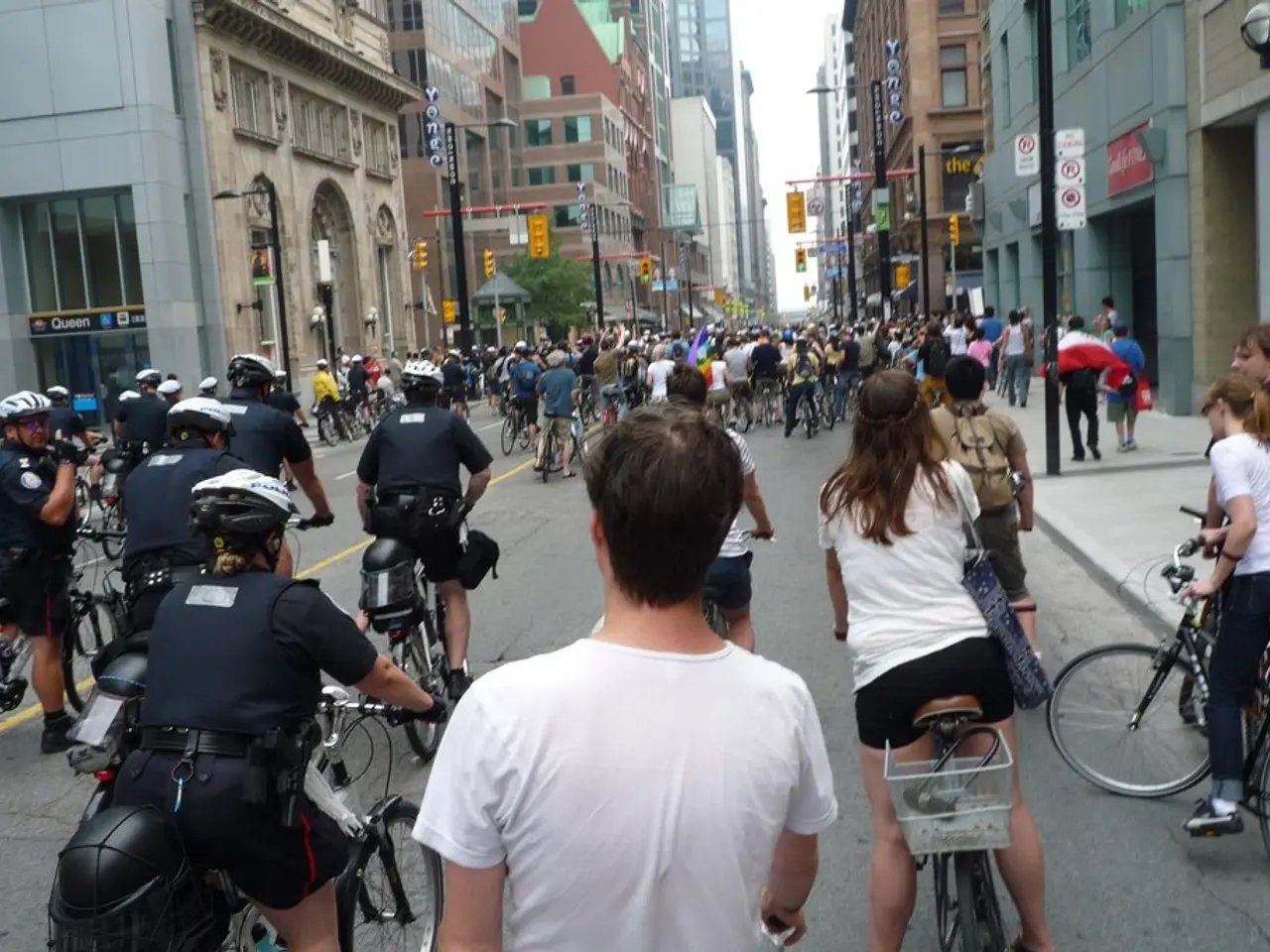Rediscovering the Connection: Strategies for Cyclist-Oriented Intersections
In the quest to create safer and more comfortable cycling cities, the design of intersections plays a crucial role. Here are some key factors to consider when designing bike-friendly intersections for improved safety and comfort.
Dedicated Space for Bicyclists
Providing clearly separated bike lanes or paths at intersections, such as separated bike lanes with vertical barriers, ensures bicyclists have their own safe space and reduces stress from mixing with vehicular traffic. This dedicated space is essential for promoting a sense of safety and reducing the risk of accidents.
Slowing Vehicle Speeds
Incorporating design elements that reduce vehicle speed, especially when approaching and crossing intersections, like narrowed crossing distances and traffic-calming features, improves safety for all users. Slower speeds reduce the severity of accidents and make intersections more manageable for cyclists.
Improved Visibility
Designing intersections so that all street users—drivers, bicyclists, and pedestrians—have clear sight lines to see each other helps prevent collisions. Well-lit bicycles, hi-vis clothing, and bright colored helmets can increase the visibility of cyclists at intersections, but mandatory requirements may deter people from cycling.
Shorter Pedestrian and Bicycle Crossings
Reducing crossing distances by adding median islands or pedestrian refuge spaces makes the crossing safer and less intimidating for bicyclists and pedestrians. Shorter crossings reduce the exposure time of cyclists and pedestrians to potential dangers.
Left-Turn Control Measures
Using hardened centerlines or flexible delineators to channelize and slow left-turning vehicles reduces conflicts with bicyclists crossing or continuing through intersections. These measures help create a more predictable and safe environment for cyclists.
Bike Crossing Prioritization
Where intersections have stoplights, giving bicycles crossing priority or dedicated signal phases can enhance safety and comfort by minimizing conflicts with turning vehicles. This prioritization ensures that cyclists are given the right of way, reducing the risk of accidents.
Reducing Intersection Frequency
Minimizing the number of intersections on key bike routes reduces exposure to potential crash points, given that over 70% of lethal or serious cycling accidents occur at intersections. Reducing the number of intersections creates a smoother and safer cycling experience.
Two-Stage Turn Boxes
Providing these for bicyclists at intersections allows safe and predictable turning maneuvers by letting them cross first and then proceed in the new direction when the light changes. This design element creates a more efficient and safe environment for cyclists, particularly at busy intersections.
Traffic-Calmed Local Streets
Creating low-traffic neighborhood streets with reduced vehicle volumes and speeds supports safe, comfortable cycling through intersections. Traffic-calmed streets reduce the stress of cycling and promote a more pleasant and enjoyable cycling experience.
These factors collectively create intersections that accommodate bicyclists’ needs for space, visibility, and safe vehicle interactions while balancing traffic flow and minimizing delay. The overall goal is to make intersections places where bicyclists of all ages and skill levels feel comfortable and confident traveling.
It's important to note that local culture and traffic regulations can influence the choice of cycling intersection design. Traffic planners should consider the diversity of cyclists, including those who ride for work, recreation, with family, or who use adaptive bikes. A lighter touch intersection may be appropriate at lower levels of speed and volume, while phased traffic lights can provide safety for cyclists when physical separation is not possible.
In conclusion, by focusing on dedicated space for bicyclists, slowing vehicle speeds, improving visibility, shortening crossings, implementing left-turn control measures, prioritizing bike crossings, reducing intersection frequency, providing two-stage turn boxes, and traffic-calming local streets, we can create safer and more comfortable cycling cities.
- For a balanced and enriching lifestyle, consider investing in resources for education and self-development, such as books, online courses, or workshops on various topics like fashion-and-beauty, sports, and cooking for food-and-drink.
- If you're planning a trip, research travel destinations that not only offer iconic landmarks but also pet-friendly accommodations, as your furry companions are important part of your relationships.
- Home-and-garden enthusiasts can incorporate eco-friendly design elements into their homes, like using recycled materials, energy-efficient appliances, and plants for improved air quality.
- Including a dedicated space for pets, such as a comfy pet bed or a fun toy, enhances the comfort and happiness of your furry friends and strengthens the bond within relationships.
- A car with a spacious trunk and ample legroom would be ideal for shopping trips, ensuring a stress-free experience and convenience to transport purchases from fashion-and-beauty stores or household items from home-and-garden stores.





